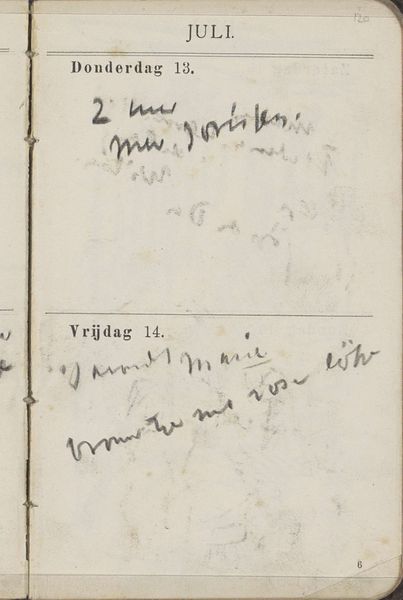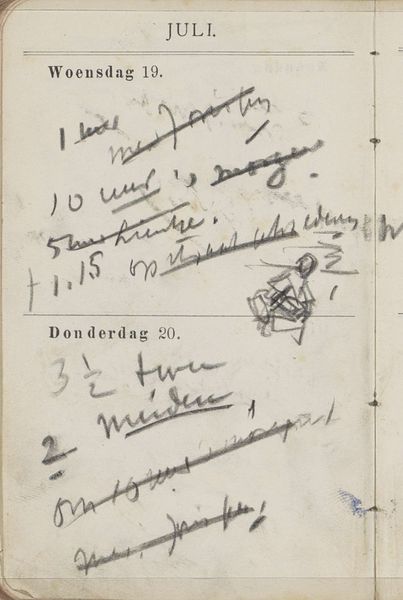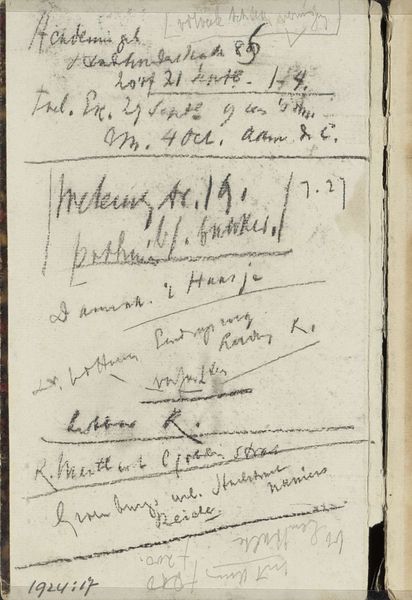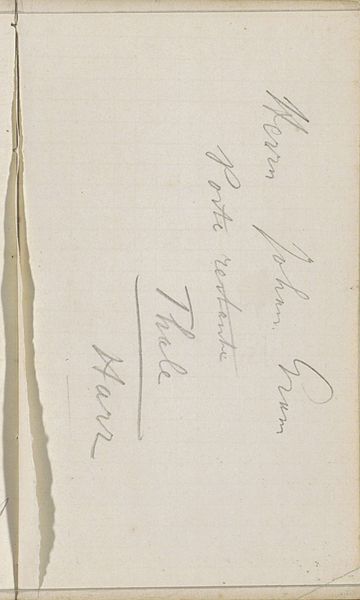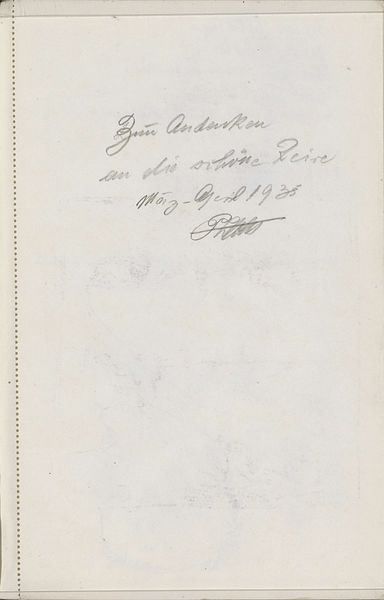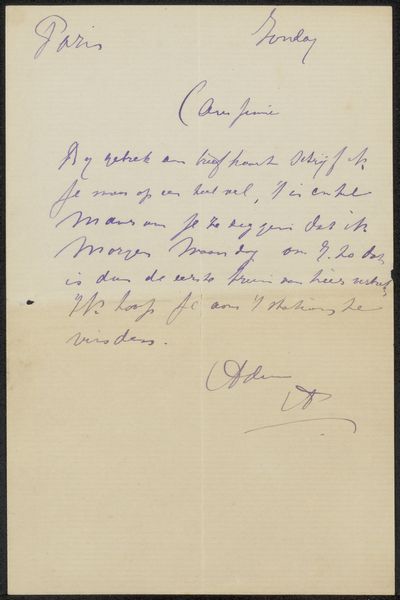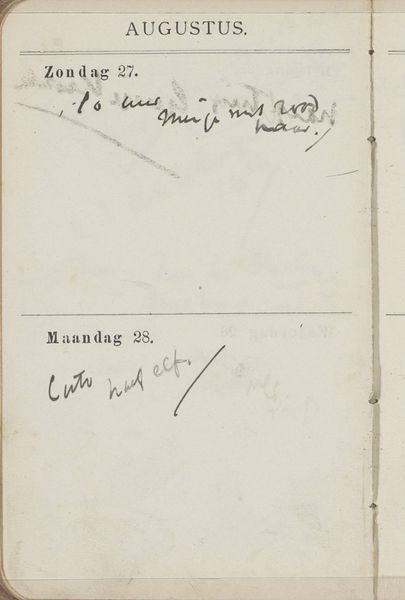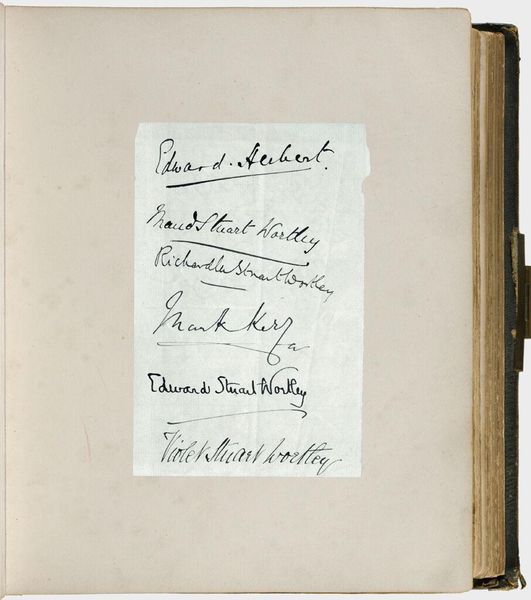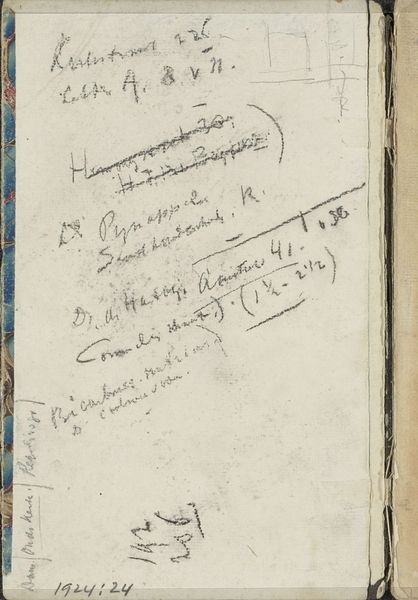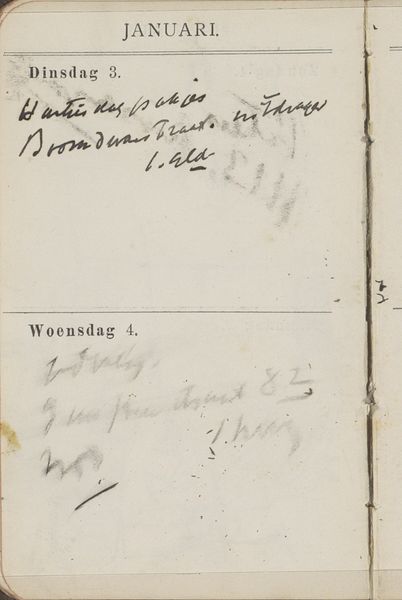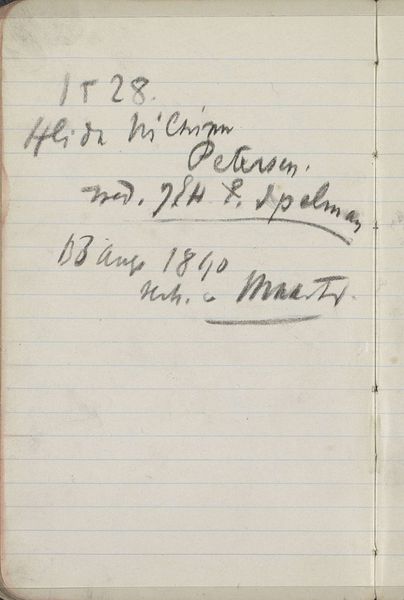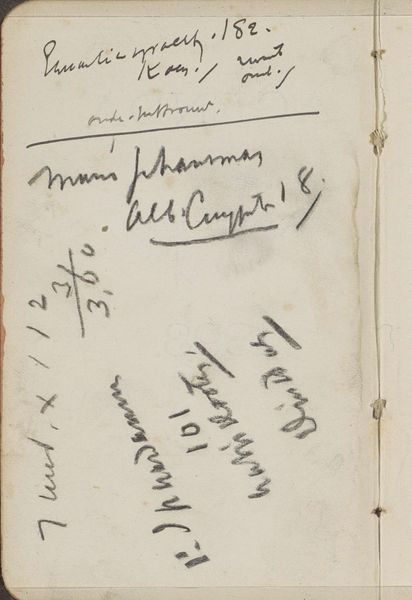
Copyright: Rijks Museum: Open Domain
Curator: This is “Annotaties” by George Hendrik Breitner, created in 1893. It's ink on paper, currently held at the Rijksmuseum. Editor: It’s fascinating. It’s literally someone’s notations from a particular moment. The script becomes almost like an abstract mark making – like the idea of calligraphy rather than actually something intended to be read. What strikes you about this piece? Curator: I see Breitner using the everyday object, a commonplace diary page, to explore the textures and inherent qualities of ink and paper. Consider the labor involved – the crafting of the paper, the formulation of the ink, the very act of handwriting. Each element has a production history, and Breitner brings them together within the frame of art. How does shifting something from functional artifact to art object impact the viewer’s interpretation and, importantly, the art market? Editor: So you’re saying by framing it, by designating it art, Breitner highlights the inherent value and material history typically overlooked in such utilitarian objects. Curator: Exactly! Think about the societal context, the rise of consumerism in the late 19th century. Were diaries and personal notebooks luxury items, available only to a select few? If so, how did that inform who saw it? Did he appropriate the materials of a marginalized social class? These annotations – glimpses into Breitner's life – simultaneously document and transform ordinary materials into something worthy of attention, and contemplation in a museum setting. How do you view that relationship now, viewing it in the present, as opposed to contemporaneously? Editor: I see now how the meaning is wrapped up in the means of its creation. It forces us to reconsider our perception of art and the value we assign to labor and material. I never would have looked at a diary entry in a museum setting and considered its value or societal influences beyond just reading its notes. Curator: Precisely. By decentering the traditional artist narrative and focusing on materials and making, we get a richer, more complex understanding of the art itself and its place in history.
Comments
No comments
Be the first to comment and join the conversation on the ultimate creative platform.
